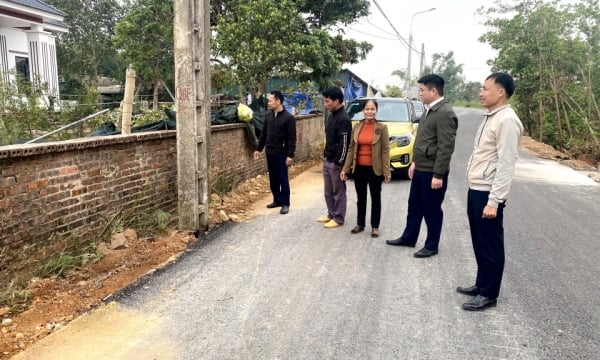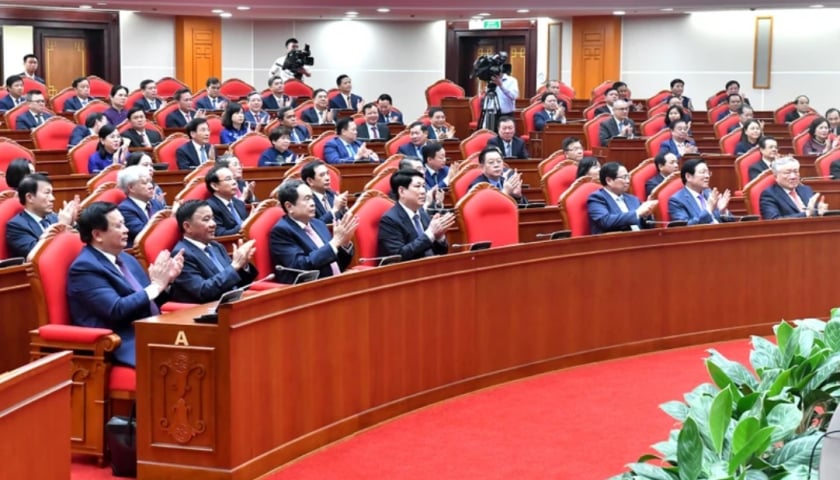According to many experts, the implementation of two-component electricity prices will contribute to creating fairness and transparency between sellers and buyers; ensuring that electricity users pay the correct cost of the system, avoiding the current leveling situation.
More transparent and fair electricity prices
Vietnam Electricity Group (EVN) has just proposed the Ministry of Industry and Trade to pilot the implementation of 2 component electricity price. This is an issue of great concern to people, especially in the context of electricity prices being adjusted to increase every 3 months.
Talk to PV Tien Phong , Dr. Doan Van Binh - former Director of the Institute of Energy Science - said that the implementation of two-component electricity prices (including electricity prices based on capacity and electricity consumption) is reasonable and should have been implemented a long time ago, because this has a great impact on the cost and price of electricity production.
According to Mr. Binh, Vietnam currently applies a single-component electricity price (payment based on electricity consumption). This calculation method is considered not to accurately reflect the costs incurred by the electricity industry (asset depreciation, power lines, transformer stations, etc.) for each customer.
In particular, calculating the price of electricity based on only one component (electricity consumption) can easily lead to people using a lot of electricity in a short period of time; having to invest heavily in power lines and transformer stations to operate, causing waste, affecting the cost of the entire system and causing electricity prices to increase.

Mr. Binh cited the case of people using 500kWh/month but only concentrating on a few days; the investment cost to ensure safe operation of the entire system will be different from using 500kWh evenly over 30 days, even though the electricity bill for both methods is the same.
For power suppliers, instead of investing in a 100MW plant with high investment and operating costs, investing in a 10MW plant is enough to serve.
“Applying a two-component electricity price will create a fairer price for sellers, buyers and electricity users. If the load is regulated more wisely, it will also help reduce the electricity purchase price,” said Mr. Binh.
The former Director of the Institute of Energy Science said that when applying the two-component electricity price, users will have to pay attention to how to use electricity most effectively. For example, the expensive electricity price calculated based on capacity forces factories to reduce capacity and regulate production appropriately; thereby changing electricity usage behavior.
Which customer groups will be affected?
According to energy expert Nguyen Huy Hoach, with the two-component electricity price, customers will pay separately for each kWh of capacity they register with the supplier every month. When not in use, users still have to pay this cost instead of the electricity industry bearing and recovering it through price adjustments as it does now.
Therefore, the application of 2-component electricity price only occurs for the group of customers using electricity for production (3-phase electricity), the group of customers using electricity for domestic use with output greater than or equal to 2,000 kWh/month. Electricity price will be classified according to 4 voltage levels: Super high voltage, high voltage, medium voltage and low voltage.
The calculation of two-component electricity prices has been implemented in many countries, mostly applied to customers using electricity for production and business purposes, and some countries also apply it to household electricity.

Mr. Hoach said that in reality, power corporations have deployed electronic meters capable of measuring capacity and electricity for most customers using electricity for production and business purposes. Therefore, implementing a two-component electricity price will not be difficult to apply. Customers using the same amount of electricity per month (in kWh) but with a low load factor will have to pay more than customers with a high load factor.
"Applying electricity prices in two components combined with current retail electricity price regulations will contribute to balancing the system's load chart and reducing the need for investment in power sources and grids, to meet the electricity usage capacity during peak hours. However, before applying, it is also necessary to widely consult scientists, users and widely disseminate information so that people can understand," Mr. Hoach shared.
Mr. Nguyen Tien Thoa - Chairman of Vietnam Valuation Association - said that in countries applying 2-component electricity prices, when adjusting electricity prices, customers hardly complain, because fixed costs remain the same and are transparent.
Currently, we are conducting a pilot study to assess its impact, thereby demonstrating the difference between the two options. In particular, consumers will have the opportunity to evaluate and compare the two options in terms of price differences when using electricity. We need such a pilot period to evaluate, summarize and replicate if we really see the effectiveness of applying the two-component electricity price.
Regarding the implementation roadmap, EVN proposes to initially apply the trial to some customer groups. The results of calculating electricity bills according to the two-component electricity price mechanism in the trial phase will continue to be used for comparison, evaluation, summary, and adjustment before moving to the official application transition phase.
Regarding the roadmap for applying two-component electricity prices, the consulting unit proposed a trial phase, a transition phase and official application.
The ideal scenario would be to roll out to all customers by January 1, 2025, if the proposed pilot phase is implemented and completed as planned.
Source






![[Photo] Closing of the 11th Conference of the 13th Central Committee of the Communist Party of Vietnam](https://vstatic.vietnam.vn/vietnam/resource/IMAGE/2025/4/12/114b57fe6e9b4814a5ddfacf6dfe5b7f)
![[Photo] Overcoming all difficulties, speeding up construction progress of Hoa Binh Hydropower Plant Expansion Project](https://vstatic.vietnam.vn/vietnam/resource/IMAGE/2025/4/12/bff04b551e98484c84d74c8faa3526e0)
























































































Comment (0)